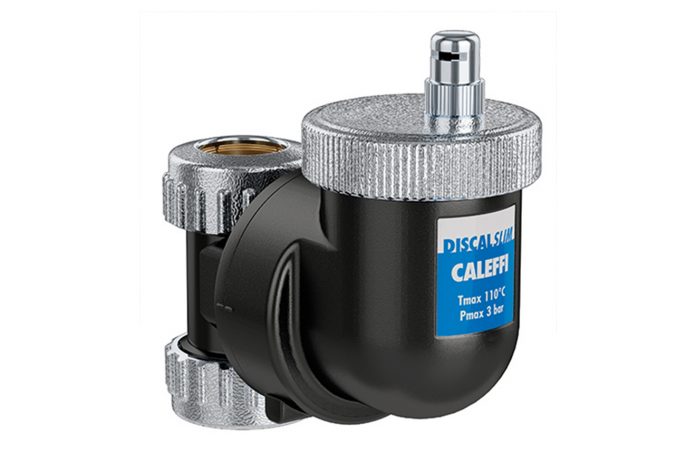It is a well-known fact that venting and degassing equipment are indispensable features of a water distribution system. Air and dirt in systems are a common cause of operational problems and their removal is a key factor in achieving maximum efficiency.
Why is air present in water?
Cold mains water used to fill systems is often more than 95% saturated with dissolved air consisting of a mixture of oxygen, nitrogen and other trace gases. With non-dissolved air, the gases are separate from the water molecules and are entrained in the form of bubbles of various sizes down to the microscopic level.
There are three forms of entrapped air: stationary air pockets at high points, entrained micro-bubbles and dissolved within water. If neglected, the presence of air in a system can lead to many unexpected consequences such as premature deterioration of equipment and a decrease in overall system efficiency. For example, nitrogen is the main cause of classic air problems, whereas oxygen is the main cause of corrosion.
Free gas bubbles may significantly affect circulation as they can bind together in areas of low velocity to create localised air pockets, which remain in place and reduce flow rate. Dissolved oxygen is a highly reactive gas and if air is constantly present in a system because of inadequate deaeration, continuous exposure would accelerate corrosion of ferrous materials, affecting steel piping, cast iron boilers, expansion tanks, eventually leading to reduced performance and leaks.
Another key deaeration consideration is noise. Flow noise in pipes, fittings and radiators is quite irritating for building occupants and is a sign of the presence of air in the system.
Why is deaeration important?
A new hydronic system begins life completely filled with air which needs to be eliminated. Unlike water, air is a good insulator. If air is present in heat transfer devices such as coils, radiators and heat exchangers for example, it significantly reduces the rate of heat transfer and overall efficiency.
Traditionally, systems are filled from the bottom up to allow air to be expelled by air vents. Air trapped in a hydronic heating system can reduce energy efficiency by up to 10% and contribute to corrosion which, in turn, can result in blockages in pipes and equipment.
Hydronic balancing and control valves require deaerated water in order to achieve designed flow characteristics. Presence of air in the system could change the Kv of balancing valves and their water flow characteristics. Air would also cause excess turbulence and unstable pressure signals downstream of a valve.
How does deaeration work?
Automatic Air Vents are designed to continuously remove air without manual intervention. Placed at high points in a water distribution system, Automatic Air Vents will ensure efficient initial venting of accumulated air to atmosphere during filling because the water is not flowing. However, air vents will not capture bubbles from flowing water. Gas bubbles and micro bubbles are carried along with the flow, therefore separation is only possible with specific separation devices.
The design of separators causes the flow velocity to be locally reduced within the main body, allowing existing bubbles in the less turbulent water to rise to the top and the gases are expelled through an integral, top-mounted Automatic Air Vent.
Separators for micro-bubbles are compact units and are suitable for operational degassing and continuous venting. An internal mesh type of baffle with sharp edges induces the micro-bubbles to cling to the surface. They then coalesce into larger bubbles which rise and are expelled to the atmosphere.
Separators for micro-bubbles should be installed in the hottest part of the system, typically close to and downstream of the boiler, and before the pump. For cool water systems, the separator should be installed in the return, upstream of the chiller.
To ensure correct operation of the venting feature, separators and automatic air vents must be installed with the operating axis in the vertical plane. Conventionally, they are fitted in horizontal pipework but the new Altecnic 551 DISCALSLIM® allows installation in horizontal, vertical and inclined pipework. The adjustable orientation of the 551 means the venting feature can always be positioned vertically, irrespective of the pipe orientation.
For more information, contact Chris Reilly, Country Manager on 00353 85 2152288, email chris-reilly@altecnic.co.uk or Gary Swann, Northern Ireland Sales Manager or 07760 596727, email gary.swann@altecnic.co.uk or visit www.altecnic.co.uk











